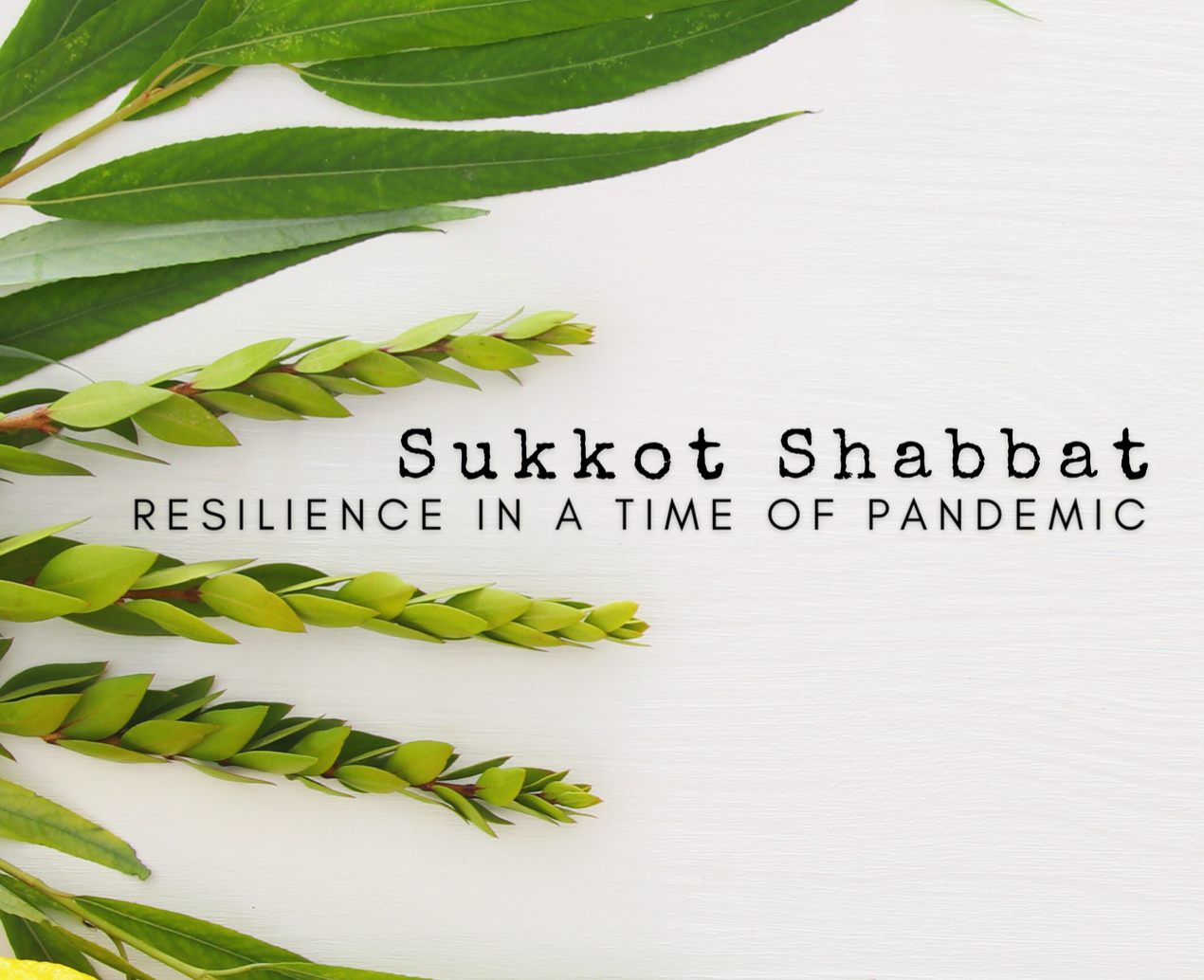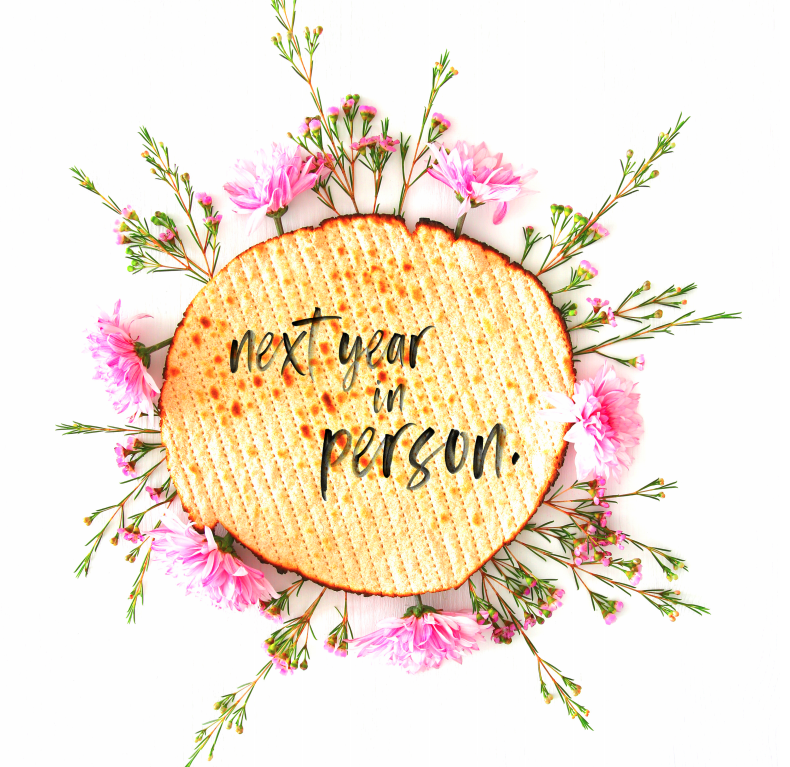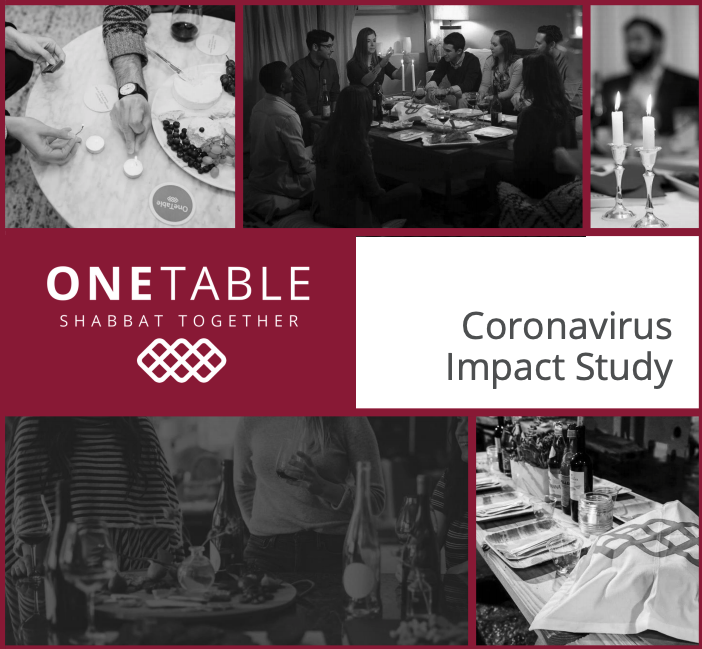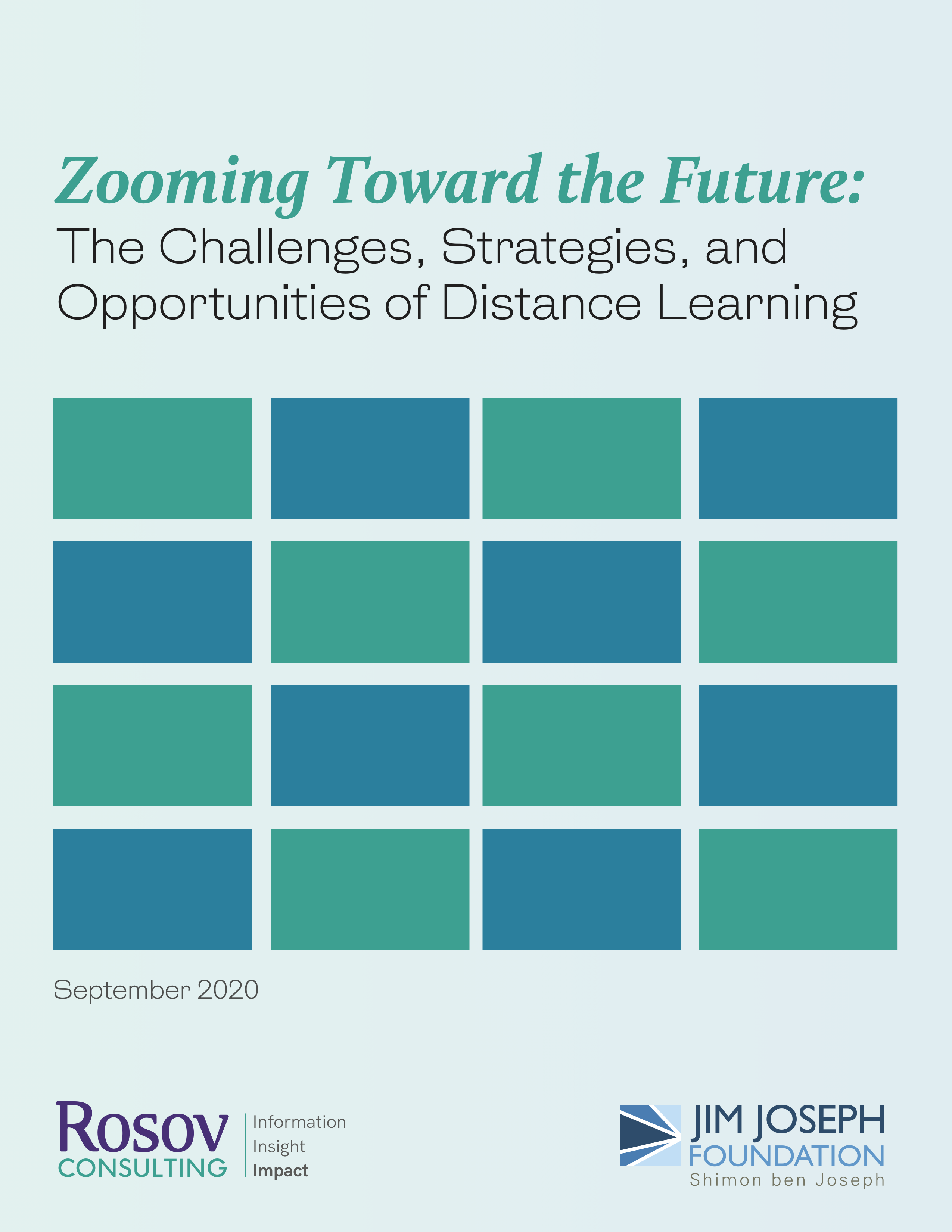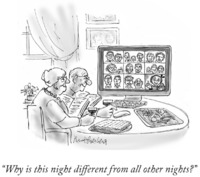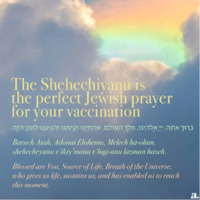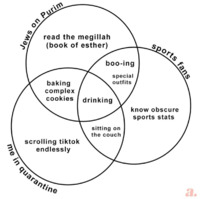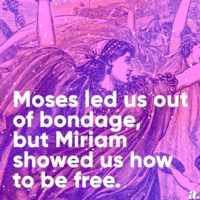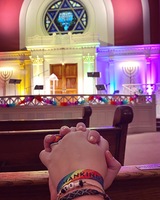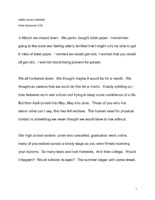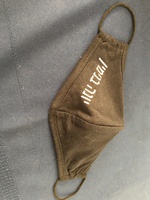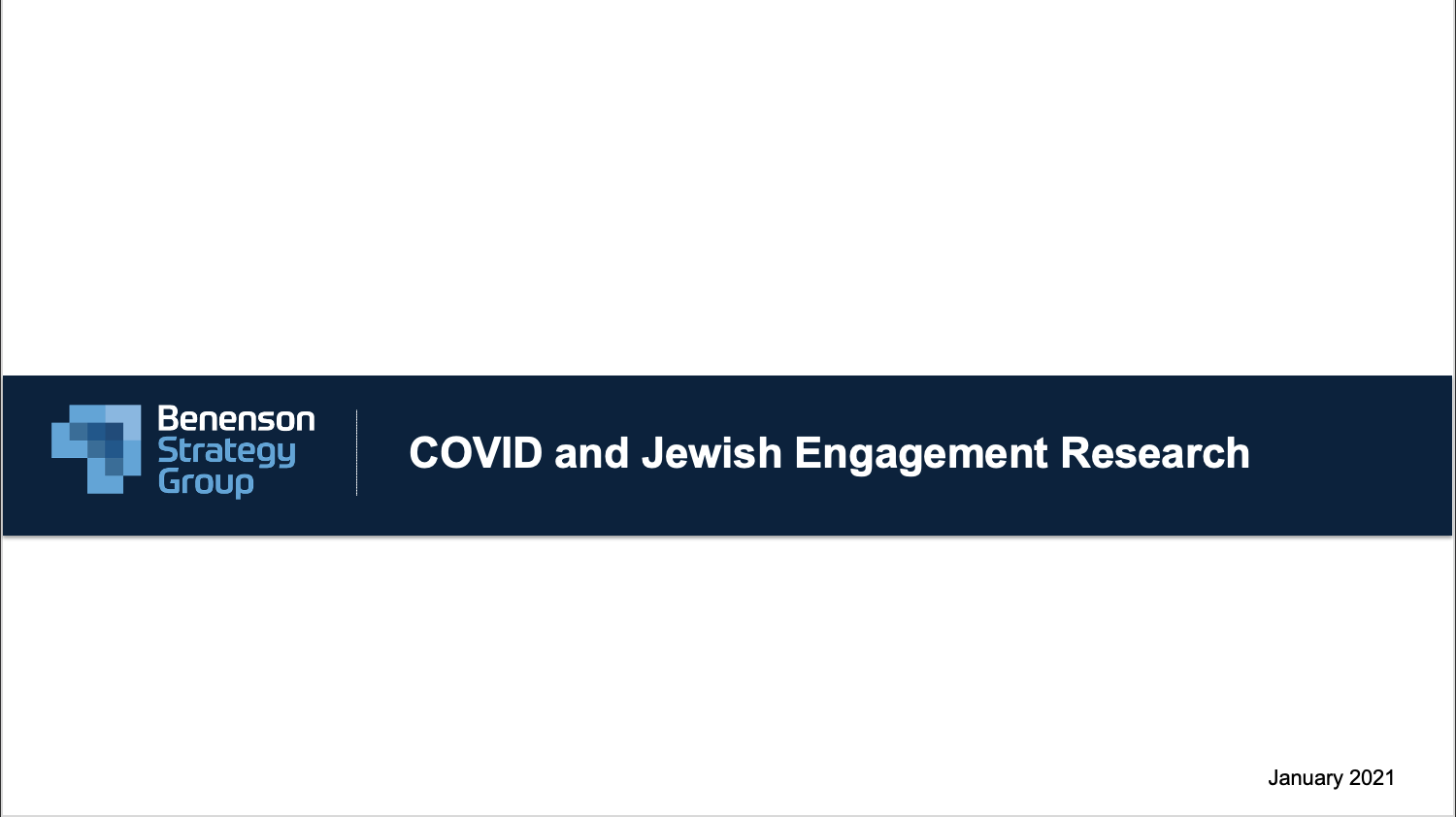American Jewish Life
Item set
- Title
-
American Jewish Life
Items
-
Sukkot Shabbat: Resilience in the Time of Pandemic
Welcome to Sukkot. This is a holiday that celebrates and lives into the many tensions in our lives. The two traditional roots of Sukkot — the temporary homes the Israelites created during their time of wandering in the Wilderness of Sinai, and the shelters erected in ancient Israel during the fall harvest season — can be said to represent the space between these tensions: the bounty of the summer harvest coupled with the impermanence of the roofs over our heads, radical hospitality coupled with the anxiety of the impending rain that will set the stage for next year’s growing season. During this year of tremendous challenge, as we prepare to bring in Shabbat — the proverbial “Temple in Time” — within the holiday of Sukkot, we honor all of the ways in which we have had to create impermanent shelters that have enabled us to weather the wilderness of the pandemic. We’ve sheltered in place, drawn circles of support during social isolation, cared for our friends and family members, worked in the frontlines of essential work and care, used the spaces in our homes for far more functions than they ever used to need to fill, and likewise used virtual tools for connection to create digital spaces to stand in for the physical spaces we’d otherwise occupy together. So this year as we celebrate Shabbat during Sukkot, let us celebrate ourselves and each other — whether you have a physical Sukkah in your yard, patio, or balcony, or your Sukkah exists only in the metaphysical realm of your imagination, we celebrate the creation of sacred space and time and the opportunity to dwell within its midst. -
Solo Seder: A OneTable Guide
Three days after the United States entered WWI, the National Jewish Welfare Board was founded; among their first large scale projects was the Solo Seder kit. Containing a Haggadah, grape juice, soup mix, and matzah, the kit was shipped to overseas military personnel so that they could celebrate Passover alone. For many, the idea of Seder alone is anathema to everything Passover represents: performance, participation, peoplehood. After all, at the core of the practice is storytelling, ritual, and symbolic reenactment. Don’t these things require an IRL experience? This year, as in 1917 and 2020, the answer for many of us is no. Meaning can be made on your own, with the right intention and the right tools. This is not a Haggadah, but rather a real time supplement that offers first person introductions — poetry, lyrics, mindful reflections — for you to read before each section of the Seder. Choose the Haggadah that works for you, and use this resource to add meaning, set personal intention, and make your Seder of One a testament to the timeliness and power of ritual. -
In Solidarity Around the Shabbat Table
Shabbat is about imagining a better world, and considering the actions we need to take to make that world a reality. Whether Friday night is a time to engage in powerful conversation, or a time to take a break from the work of change-making, this is just the one of many ways we can amplify Black voices at our tables and prepare ourselves for the work — and the world — to come. -
Solo Shabbat Guide
On a sailing trip in 1989 Italian teacher Mauro Morandi encountered a small island nestled between Sardinia and Corsica. Uninhabited save for a caretaker, Morandi was captivated by its beauty and isolation. Soon after, he took over as the island’s guardian and sole inhabitant — and remains there over 30 years later. Alone but not lonely, Morandi reminds us to distinguish between the two. Being alone during this pandemic is life-saving work, and while most of us are not fortunate enough to be alone on a beautiful Mediterranean island, we can all encounter what philosopher Abraham Joshua Heschel calls “an island in time”every week on Friday night. -
The Shabbat Alone, Together Guide
Friday night is an invitation to elevate time and space, and to encounter joy. We have created this dinner guide to support you as you do that alone, together. Whether you are celebrating on your own, virtually with others online, or in person with your housemates, we hope these resources connect you to the experience of Shabbat in a way that is new and — perhaps surprisingly — sacred. -
Alone, Less Lonely - OneTable Solo Shabbat Study
Nearly one year into this worldwide pandemic people are tired, lonely, and tired of being alone. Every day can feel like “blursday.” I have found myself asking, “how close are we to Shabbat?” countless times. OneTable was created to foster strong ties among Jewish young adults through the ritual of Shabbat dinner. Until March 2020, we encouraged groups of 8-12 people to gather - even incentivizing invitations to newcomers. If we have learned anything from this pandemic - it’s that the power of ritual, especially Shabbat, can be life changing (and affirming). And that Shabbat itself is elastic. OneTable participants have taught us that Shabbat can offer that sense of connection, grounding, and even meaningful ties to the community while being totally alone. What you will see in this report is stunning, creative and even joyful solo Shabbat celebration. It is also a testament to the beauty of the intentions we create, and the power of the time we spend, with ourselves. What does this mean for how the community, Jewish and otherwise, serves people who are alone by choice or circumstance? How might we embrace them as a real and substantial part of our diverse community? When we can return to boisterous, crowded gatherings, how will we make space for those looking for quiet reflection and renewal? -
Rhythm, Relationship, Reckoning Report
OneTable was about to embark on a full impact study with Benenson Strategy Group (BSG) when COVID-19 hit. In consultation with the Research Advisory Board, OneTable pivoted to a shorter, faster survey. We wanted to know: How is the OneTable community coping during this crisis? OneTable engaged BSG to field a pulse check survey to our community, and Sacred Design Lab and Designing Empathy to dive deep with journal entries and focus groups for a small sub-group of participants. These two studies were separate, but complementary. This resulting report is very informative and presents a picture of how challenging the virus has been in the lives of young adults. Nearly two thirds of survey participants (65%) know someone who has contracted or died from the virus. As can be expected during a crisis, there is an increased awareness of, and positive feelings toward, participants’ religious identities. Particularly important is their strong sense of being Jewish, and of incorporating Shabbat into their lives more regularly. The report also raised some important questions for us: What resilience underlies our community's feelings of luck and gratitude? What else are they grieving? We need to identify these sources of loss to help us understand what more OneTable can offer them. All of this just underscores to us the value — and implicit message of fostering a Jewish identity — OneTable is bringing to people’s lives. We are so thankful that these participants shared with us so generously, and we are eager to share what they’ve taught us in their own words. Signed, Dr. Barbara Schneider, on behalf of the OneTable Research Advisory Board -
OneTable Coronavirus Impact Study
OneTable was about to embark on a full impact study with Benenson Strategy Group (BSG) when COVID-19 hit. In consultation with the Research Advisory Board, OneTable pivoted to a shorter, faster survey. We wanted to know: How is the OneTable community coping during this crisis? OneTable engaged BSG to field a pulse check survey to our community, and Sacred Design Lab and Designing Empathy to dive deep with journal entries and focus groups for a small sub-group of participants. These two studies were separate, but complementary. This resulting report is very informative and presents a picture of how challenging the virus has been in the lives of young adults. Nearly two thirds of survey participants (65%) know someone who has contracted or died from the virus. As can be expected during a crisis, there is an increased awareness of, and positive feelings toward, participants’ religious identities. Particularly important is their strong sense of being Jewish, and of incorporating Shabbat into their lives more regularly. The report also raised some important questions for us: What resilience underlies our community's feelings of luck and gratitude? What else are they grieving? We need to identify these sources of loss to help us understand what more OneTable can offer them. All of this just underscores to us the value — and implicit message of fostering a Jewish identity — OneTable is bringing to people’s lives. We are so thankful that these participants shared with us so generously, and we are eager to share what they’ve taught us in their own words. -
Thoughts on facing Passover in isolation
Message left on the Jewish History Museum in Tucson's Oral History Hotline -
Virtually Developing: Exploring the Potential and Pitfalls of Online Professional Development and Adult Learning
Introduction: During summer and fall 2020, Rosov Consulting engaged in a multifaceted study of 13 Jewish adult learning and professional development programs that shifted their offerings online due to COVID-19 (nine are part of the Jim Joseph Foundation Professional Development Initiative, four are from other Jim Joseph Foundation grantees). In the first stage of our research, we interviewed program provider about the challenges they faced in moving to online learning, the positive “silver linings” of the virtual experience, and the longer-term impacts of reimagining how they do their work. In the second stage, we explored the experiences of and impacts on program participants through a survey of more than 1,600 participants and followup interviews with 14 of them. The programs included both those specifically for educators and Jewish professionals as well as general adult Jewish learning open to all. We sought to understand the personal and professional impacts of online learning; the strengths and limitations of the experience, particularly as compared to inperson learning; and what facilitates and impedes learning through virtual modalities. -
Zooming Toward the Future: The Challenges, Strategies, and Opportunities of Distance Learning
From the introduction: "To help the Foundation and the field better understand how pivoting to distance learning has unfolded for Jewish education and professional development organizations, Rosov Consulting interviewed nine program providers from the Jim Joseph Foundation PDI cohort, along with five other Jim Joseph Foundation grantees that operate in overlapping fields. The interviews explored the initial choices organizations made and how those choices evolved over time. We investigated the challenges that programs faced when moving online, whether and how they were able to address those challenges, the positive “silver linings” of being forced to reimagine how they do their work, and which dimensions might continue once people can gather in person again.* This report synthesizes the key themes we heard in these conversations, categorized into the challenges programs have faced in the pivot to distance learning, the strategies to overcome them that have proved most effective, and the opportunities (both predictable and surprising) that have emerged from the crisis. We conclude by sharing organizational leaders’ perspectives on how they envision the “new normal” in a post-COVID world." -
Research Bulletin #1: Has Remote Learning Set Back Jewish Day School Students?
Background: In July 2020, 16 Jewish day high schools fielded a survey to their students about their experience of remote learning since the onset of the COVID-19 pandemic. The survey was developed with support from the Government of Israel’s Ministry of Diaspora Affairs as part of work for Unit.Ed—a day school initiative in Europe and Latin America. It was originally fielded in Jewish communities such as Milan, Paris, and Buenos Aires. Subsequently, it was slightly modified for students in North America. North American data were collected and analyzed with the support of the Jim Joseph Foundation and in partnership with Prizmah: Center for Jewish Day Schools. After data analysis was complete, interviews were conducted with school leaders at the schools whose students had responded most positively in order to learn about their educational practices during this period. In total, 1,383 students responded to the North American survey. All of these respondents were enrolled in 9th through 12th grade during the 2019–2020 academic year. Ten of the participating schools are Modern Orthodox; six are Community or Conservative high schools. The response rate at the participating schools was between 24% and 76%. The average response rate was 41%. This bulletin focuses on student responses to the question: “Do you feel that remote learning has set your education back in some way?” Possible responses, on a four-point scale, were: “Not at all,” “A little,” “Somewhat,” and “Very much.” Students were asked to explain their responses to this question in their own words; 1,112 did so. -
"Why is this night different from all other nights?"
A cartoon created by Mort Gerberg for the New Yorker that depicts an elderly couple on a Passover seder zoom call with many members of their family. The caption reads, "Why is this night different from all other nights?" -
The Perfect Jewish Prayer for Your Vaccination
An article written by Sarah Flores Shannon for Alma entitled "The Perfect Jewish Prayer for Your Vaccination." Image description via Alma's instagram: Image of a rainbow peeking through clouds. Text reads "The Shehechiyanu is the perfect Jewish prayer for your vaccination," with the Hebrew, transliteration, and English text: בָּרוּךְ אַתָּה, יְיָ אֱלֹהֵינוּ, מֶלֶךְ הָעוֹלָם, שֶׁהֶחֱיָנוּ וְקִיְּמָנוּ וְהִגִּיעָנוּ לַזְּמַן הַזֶּה. Baruch Atah, Adonai Eloheinu, Melech ha-olam, shehecheyanu v’ikiy’manu v’higi-anu lazman hazeh. Blessed are You, Source of Life, Breath of the Universe, who gives us life, sustains us, and has enabled us to reach this moment. -
Purim, Quarantine, and Sports Venn Diagram
Alma's (@hey.alma) instagram caption: You're gonna look at us and tell us that we're wrong??? Image description: A three-circle venn diagram. One circle is "Jews on Purim," another is "sports fans" and last is "me in quarantine." The overlap between all three is "drinking," between Purim/sports is "boo-ing" and "special outfits," between Purim/quarantine is "baking complex cookies," and between quarantine/sports is "sitting on the couch." Unique to Purim is "read the megillah [book of esther]," to sports is "know obscure sports stats" and quarantine is "scrolling tiktok endlessly." Whew, describing venn diagrams is TOUGH. -
The Holiness of Returning to Summer Camp
An article written by Eva Grossman for Alma entitled "The Holiness of Returning to Jewish Summer Camp." -
Miriam's Legacy Will Get Us Through the Pandemic
An article written by Arielle Kaplan for Alma entitled "Miriam's Legacy Will Get Us Through the Pandemic." -
The Bat Mitzvah of Theodora Foer
(2021.19.01) The mint-colored mask worn by Theodora Foer during her Bat Mitzvah. Theo wore the mask and had her service in her grandparent's backyard due to the COVID-19 pandemic. Oct. 2020. Gift of Esther Foer. (2021.19.02) The light blue Kippah worn by Theodora Foer during her Bat Mitzvah. Gold lettering on interior of Kippah reads "Bat Mitzvah of Theodora Foer October 3, 2020" Gift of Esther Foer. (2021.19.03) Theodora Foer and Rabbi Lauren Holtzblatt put on their tallitot (prayer shawls) during Theo's bat mitzvah service. The bat mitzvah was held in the backyard of Theo's grandparents, Esther & Bert Foer, due to the COVID-19 Pandemic. Oct. 2020. Gift of Esther Foer. -
Pride Shabbat
National Pride Shabbat at Sixth & I was the perfect occasion for my girlfriend and I to return to our first in person Shabbat service since the start of the pandemic. It was a meaningful, joyous, and very colorful evening. Image descriptions: In the first picture, two women are holding hands with the bima lit up in rainbow colors in the background. On the wrist of one of the women is a rainbow bracelet that says humankind. In the second picture, the dome on the ceiling of the sanctuary with a Jewish star at the center is lit up in rainbow colors. -
Rabbi Lauren Holtzblatt's Rosh Hashanah Sermon
This document contains Rabbi Lauren Holtzblatt's Rosh Hashanah 2020 sermon. -
“No Choice But To Be Brave”
Rabbi Joshua M. Davidson's Passover Message -
Candle Lighting - Chanukah 2020
Over 100 Members of Congregation Emanu-El gather on Zoom for a Shabbat Chanukah Candle lighting. -
B'nei mitzvah masks, instead of kippot
These two masks were given to the immediate family and clergy for two young people at Temple Beth Jacob in Concord, NH who became b'nei mitzvah during the second year of the pandemic. Yonatan Benyamin was originally scheduled to become a bar mitzvah on Shabbat Vayikra 2020, and postponed to Shabbat Vayikra 2021, becoming the first in his now 8th grade class to celebrate. The irony is that the Friday morning before he became a bar mitzvah, his older brother, a college student, was diagnosed with COVID and had too quarantine. By counting one Torah scroll, we managed to have a minyan. 4/10/21 was from a girl who was first in her 7th grade class to become bar or bat mitzvah, on Shabbat Sh'mini, just three weeks after Yonatan Benyamin. Once again, we counted a Torah scroll to get a minyan. I am so proud of how these two -- and their classmates -- have persevered. -
Covid and Jewish Engagement Research - High Holidays 2020 Report
Among the many ways that the pandemic profoundly changed Jewish engagement, the High Holidays of 2020 stands out as a particularly fascinating case study. It was a kind of controlled experiment; essentially no one was able to celebrate or observe the holidays in the ways they were used to, so everyone was doing something somewhat different than usual. Institutions of all kinds innovated to adapt to the restrictions, and new ways of engaging emerged and spread more broadly than could have been previously imagined. In an effort to understand the ways in which people’s engagement with the High Holidays changed during this past year, and what it might reveal about Jewish engagement more broadly, the Charles and Lynn Schusterman Family Philanthropies, Jim Joseph Foundation and Aviv Foundation funded research through the Jewish Community Response and Impact Fund (JCRIF) to illuminate new patterns of participation and motivations. In the winter of 2020-2021, Benenson Strategy Group surveyed 1,414 American Jews nationwide about their experiences of the High Holidays and the ways that those experiences compared to previous years. The research explored not only what people did in 2020, but also compared it to what they had been doing before and explored what they might do in the future. The results provide important insights that have meaningful design implications not only for the upcoming High Holidays, but also for engagement efforts much more broadly. A major insight is the difference in behavior and attitudes between “Regular High Holy Day Observers” (those who typically observe both Rosh Hashanah and Yom Kippur) and “Infrequent High Holy Day Observers” (those who participate sporadically or only in one of the holidays). Remarkably, approximately half of the Infrequent Observers participated in High Holy Days during the pandemic, when it would have been very easy to opt out (see slide 15). Their robust participation leads us to explore both their motivations for participating and how their participation this year may impact their future decisions and behavior as well. The motivations of Regular and Infrequent Observers were distinct. While Regular Observers largely report that they were trying to get as close as possible to normal, Infrequent Observers emphasized that they engaged because it was “easy and straightforward” (new modalities, lower barriers to entry [real and perceived, such as social anxiety, complexity of bringing non-Jewish partner, lack of Jewish confidence, managing young kids, etc.]), and because of social motivators, such as recommendations from friends/family, and wanting to “connect with other people like me” (see slide 19). Infrequent Observers responded to a wider and more diverse marketplace of choices during this year, which is an important lesson for future design. In addition to the variety of options, this group now feels more permission to “do Jewish” differently than they may have assumed before. In addition, Infrequent Observers say that their positive experiences have made them interested in further participation, motivated to share those opportunities with their own friends and family, curious to try new Jewish activities, and try (or consider) new ways to observe the Jewish holidays in the future (see slides 24 and 27). These insights into the behaviors of Infrequent Observers can help create a positive and expanding feedback loop that should pique the interest of those who design such Jewish experiences and seek to engage these populations. Finally, over 50% of respondents reported that the experience of the pandemic has made them think differently about what being Jewish means, with parents with children under 18 and Infrequent Observers who did participate this year markedly higher than this average. The controlled experiment of High Holidays during the pandemic was a unique opportunity to conduct this research that illuminated themes which are useful to consider beyond the pandemic. -
Elijah Visits Zoom Seder
Friends and family celebrated Passover virtually and when we opened the door for Elijah, he appeared on Zoom! Image descriptions: Image 1: a black box with the word “Elijah” in the center in white lettering appears as a member on a zoom call with 11 total participants. Image 2: a PDF of page 82 of a 188 page Haggadah where the door is opened for Elijah. The page contains prayers in English. Celebrating Passover, my favorite holiday, over zoom was really hard and now that we’ve missed 2 in person seders, I’ll appreciate future in person celebrations of Jewish holidays even more.
